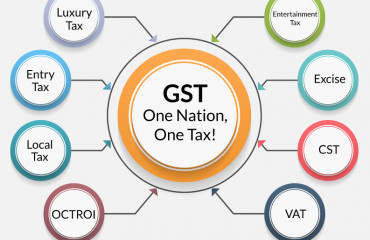
NEW DELHI : The Municipal Corporation of Delhi (MCD) recently elected new councillors in a high-pitched election. Meanwhile, elections to Mumbai’s municipal body have been delayed for nearly a year. Whoever is in charge, India’s municipalities have to work with a budget that lacks heft and is short on prudence—and, thus, ends up placing boundaries on the quality of civic life delivered. About 600 million Indians, or 40%, will be urban dwellers by 2036, against 35% now, according to the World Bank. This will put pressure on municipal services. Indian cities have perpetually struggled to be self-sustaining, said a recent report by the Reserve Bank of India (RBI) on municipal finances. This report shows that municipalities are mostly financed by three sources to a nearly equal degree: own taxes, own non-tax revenues, and transfers from governments. In 2019-20, 35.7% of total municipal revenues were to come from state and central transfers.
NEW DELHI : The Municipal Corporation of Delhi (MCD) recently elected new councillors in a high-pitched election. Meanwhile, elections to Mumbai's municipal body have been delayed for nearly a year. Whoever is in charge, India's municipalities have to work with a budget that lacks heft and is short on prudence—and, thus, ends up placing boundaries on the quality of civic life delivered. About 600 million Indians, or 40%, will be urban dwellers by 2036, against 35% now, according to the World Bank. This will put pressure on municipal services. Indian cities have perpetually struggled to be self-sustaining, said a recent report by the Reserve Bank of India (RBI) on municipal finances. This report shows that municipalities are mostly financed by three sources to a nearly equal degree: own taxes, own non-tax revenues, and transfers from governments. In 2019-20, 35.7% of total municipal revenues were to come from state and central transfers.
You might also like
Big push for energy transition likely in Budget 2023
Dozens of IPOs ready to hit market
What amended competition law will mean for businesses
How NRIs can tackle property management challenges
Even Delhi, with high commercial activity and wealth concentration, was to receive one-third of its ₹21,802-crore municipal revenues from its state government. For municipalities in 15 of the 28 states covered in the RBI report, the share of this revenue head exceeded 40%. Important municipal taxes such as octroi were subsumed in the goods and services tax (GST) in 2017. Municipal bodies have found it difficult to find new and stable sources of tax revenue. For instance, the experiment with local body tax (LBT) on goods in Maharashtra failed miserably. This creates too much dependence on state governments in areas where a city needs to spend.
Taxing Properties
In 10 of the 28 states, the share of state and central transfers in municipal revenues increased in 2019-20. Implicit in this is their own limited ability to raise revenues. Property tax is the biggest tax revenue source for most municipal bodies in the country. It is typically charged on an annual basis, on the value of a property. It can thus provide a stable and predictable source of revenue for local governments, though it is also plagued by under-coverage.
In a large city like Delhi, property tax was projected to account for 55% of its tax revenues in 2019-20. This was followed by toll tax (20.8%) and electricity tax (19.8%), according to the RBI report. For municipalities in West Bengal and Telangana, property tax is the nearly the only source of tax revenue. Developed states such as Maharashtra and Gujarat have equal reliance on taxes other than property tax, such as those on water and electricity.
User Charges Dominate
Non-tax revenues is the third category of revenues, accounting for 31.3% share in 2019-20 on an all-India basis. User charges and fees for municipal services such as health and transport form the biggest chunk. Rental income from properties owned and maintained by the municipal body, such as commercial properties and heritage buildings, is also an important source.
For Delhi, rental income from municipal properties accounts for about 47% of its non-tax revenue, against the national average of 5%. For Delhi, this proportion may go up. With the reunification of the Municipal Corporation of Delhi, there has been a major reshuffling in office spaces. For example, the 12-storey building in Karkardooma that was meant to house the Shahdara zone offices of the erstwhile East Delhi Municipal Corporation will now be put on rent. A similar repurposing is expected with offices of the North and South Delhi Municipal Corporations as well.
Quality of Expenditure
Cities need to invest in infrastructure—for example, garbage dumps and trucks, and waste-management plants. Rather than use up all their income in running the administration, they also need capital expenditure. In 2019-20, RBI estimated capex by municipal corporations to be 0.44% of GDP, against 1.7% by the Centre and 2% by states. There is variance among states, for many reasons. Municipal bodies in Delhi were projected to spend just 0.16% of the state's GSDP on capex, one of the lowest. That figure for Chhattisgarh and Maharashtra was 1.24% and 1.18%. Municipal capex spend needs to be seen along with how much a state is investing in its cities. The Delhi government, for example, aims to spend 29% of its FY23 budget on capex. Even with that, Indian cities have much catching up to do, especially to keep up with rising populations.
